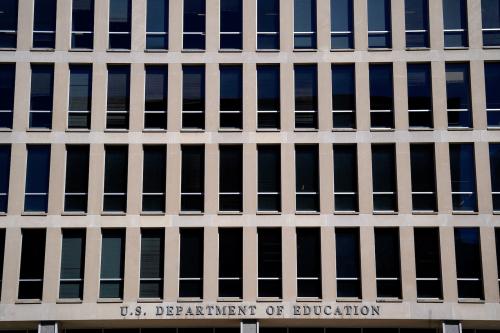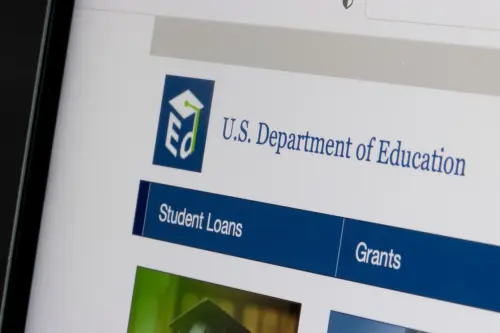Around the world—in Gaza, Israel, Lebanon, Ukraine, Myanmar, Sudan and more—over 400 million, or about 1 in every 5 children are caught in the crossfire of conflict. They are innocent victims, caught in something they did not start and something they can’t control. The average large-scale humanitarian crisis lasts about a decade and the average length of displacement is now 17 years—a full childhood. For these children, education can be a lifeline, but it is often under attack.
What happens to children in conflict?
-
Injury, death, or displacement
Conflict does not discriminate: All people—young and old—are at risk. Children, parents, teachers, and other education personnel may themselves be injured, separated from family and friends, displaced, or lose their lives. A recent report from the Global Coalition to Protect Education from Attack indicates that in 2022 and 2023, attacks on education where schools were threatened, hit with bombs or airstrikes, looted and burned, were greatest in Palestine, Ukraine, Democratic Republic of Congo (DRC), and Myanmar with over 10,000 students injured or killed. Ten-year-old Abdul Rahman from Gaza, who lost a leg in the conflict, said, “We are children and families. I am very sad. I had a football and a bicycle. I used to play with my friends at school. I wish my leg would come back so I can play again.”
-
Elevated stress and mental health ailments
Children may witness death and atrocities that no child should see, lose connections with their friends and family, and have their daily routines disrupted. These psychological scars cut deep and can have long lasting negative impacts. The World Health Organization found that elevated stress during humanitarian contexts impacts most people, and a smaller percentage of those people (about 1 in 5) can develop post-traumatic stress disorder and other mental health ailments. Research indicates that when adversities pile up, as can happen during conflict, children are more likely to experience toxic stress, a form of significantly elevated and continuous stress that can in the short term impact a child’s ability for normal functioning, and in the long term can alter chemical/hormonal makeup and genes.
-
Recruitment into armed forces or groups
Recruitment of children, a breach of international law, also occurs in conflict. Children can be forced or otherwise compelled to serve as soldiers or “wives” of soldiers, for example; some are forced to join while others do so because they lack educational or other opportunities. An adolescent boy from DRC said, “When the militia took me, I wasn’t in school because my parents had died. I was in the village—this is where they take you,” Between 2005 and 2022, UNICEF verified that over 105,000 children were recruited and used during conflict. These practices not only impact the child, but also society as it then needs to invest in reintegrating them back into society.
-
Loss of learning opportunities and brain development
Children’s brains develop rapidly, particularly in early childhood and adolescence.1 Yet, in conflict, this crucial point in development is unable to be fully taken advantage of due to damaged educational infrastructure and a heightened focus on basic necessities. At present, more than 80% of schools in Gaza are damaged or destroyed, impacting over 300,000 students. In Sudan, 90% of schools are closed or inaccessible and approximately 19 million children are out of school. When intact, places of learning, including spaces other than schools, are often taken over by military/armed groups or used as shelters by displaced families. In the best-case scenario, spaces are used for multiple purposes and learning can continue, even if for a truncated period. While all children are negatively impacted during conflict, the most vulnerable, including girls and those with disabilities, are often the ones that either never had access to learning to begin with or lose it during conflict and never return.
The cost of inaction
Conflict not only impacts children, but costs society money. Reconstruction of education infrastructure, hiring and retraining teachers, and providing health services, nutrition, shelter, and more to conflict-affected children can be costly, but the cost of inaction is greater. Syria’s long conflict and more than 2.8 million children out of school have resulted in a loss of approximately 5.4% of GDP. In 2015, it cost an estimated $3.2 billion to repair damaged school infrastructure and train new teachers. In Brazil, it costs less to get kids into school and keep them there than to support out of school children. Between 2009 and 2012, Pakistan estimated that the lack of access to education for some 5.5 million children due to conflict, cost about $2.9 billion in lost income.
The solution: Education in emergencies
Education in emergencies is defined as quality and inclusive formal and nonformal learning for children of all ages and all abilities—from early childhood through secondary school. It is like education in non-emergency contexts, but tends to be more flexible, modular in nature, and more strongly integrates psychosocial well-being. It can happen in school buildings, but also in homes, community spaces, under trees. It can be delivered in person, virtually, or through hybrid means. Education in emergencies is a buffer against adversities in humanitarian crisis experience as it provides physical safety, continued learning, a return to routines, and a place for children to form and re-form social support networks.
Numerous models for providing quality education in emergencies, such as accelerated learning for older children who have lost years, mobile learning, and learning through radio or television, have been tested. As the COVID-19 pandemic impacted locations already facing conflict, the double emergency proved that technology might offer hope for the continuation of learning in some contexts, particularly in strengthening knowledge and skills of caregivers, teachers, and other adults.
Moreover, a Save the Children survey of 8,749 children in 17 different humanitarian emergencies revealed that approximately 99% of children and their families demand education in emergencies. A 15-year old South Sudanese boy said, “We don’t want to delay. If we delay, we will remain behind.” Another 16-year-old South Sudanese refugee said, “I would leave again if I had to, to get my education.”
Education must be protected and prioritized
Many children are born during conflict, and many lose their lives and their childhoods in conflict, so action needs to be taken.
- Increase humanitarian investment into education in emergencies. While evidence is mounting on the benefits of education in emergencies, funding remains around 4% of humanitarian aid.
- Monitor and call out countries that are not adhering to the Safe Schools Declaration. In 2015, the Safe Schools Declaration, an intergovernmental political agreement that outlines commitments to protect education from attack, was developed and endorsed by 120 countries. By endorsing the declaration, countries commit to collecting data on attacks on education and investigating and prosecuting war crimes involving education.
- Implement evidence-based approaches to ensure education continues including:
- Accelerated learning for older students.
- Hybrid and virtual learning with the use of technology and media (e.g., computer, radio, tv).
- Mobile learning where learning is taken to displaced children.
- Train teachers to support children’s psychosocial needs along with their learning needs.
As Nelson Mandela said, “Education is the most powerful weapon which you can use change the world.” We must protect children’s rights to education under all circumstances and especially in conflict situations.
-
Footnotes
- In the early years, up to 1,000,000 new neural connections develop per second. In adolescence, the prefrontal cortex, which (among other things) manages high level functions and social interaction while also inhibiting inappropriate behavior, develops. Learning provides a chance for the brain to grow, mature, and prepare for adulthood and life.
The Brookings Institution is committed to quality, independence, and impact.
We are supported by a diverse array of funders. In line with our values and policies, each Brookings publication represents the sole views of its author(s).





Commentary
Keeping children’s learning out of the crossfire in conflict is our duty
September 6, 2024